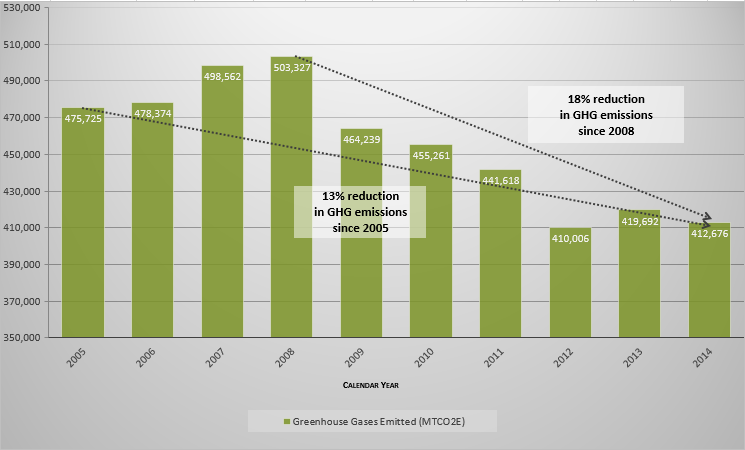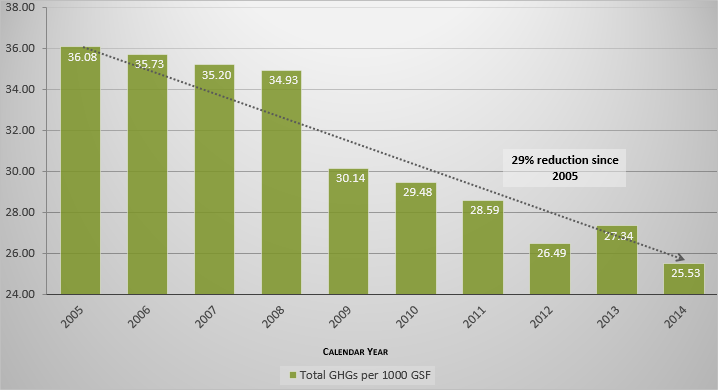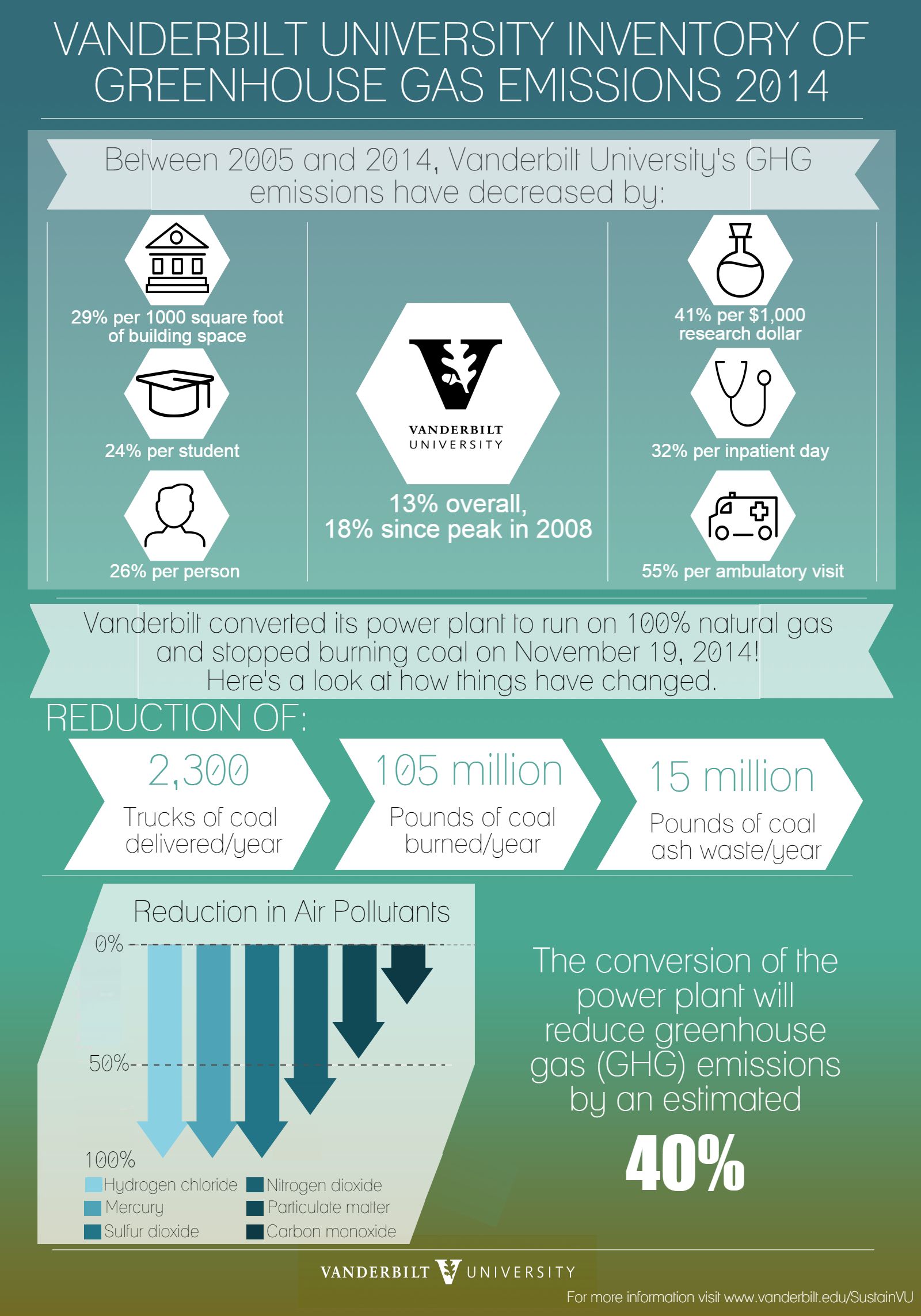Vanderbilt greenhouse gas emissions down almost 30 percent per square foot
Read the MyVU story here.
Vanderbilt University and Vanderbilt University Medical Center’s greenhouse gas (GHG) emissions decreased by 18 percent from its peak in 2008 and by 13 percent overall from calendar years 2005 to 2014, according to the Vanderbilt Sustainability and Environmental Management Office’s latest annual GHG inventory.
Taking into account Vanderbilt’s significant growth in square footage, students, patient care and research dollars over the tracking period, GHG emissions have been reduced by almost 30 percent per square foot of building space and by 41 percent per sponsored research dollar since 2005. “The typical research laboratory uses four to five times more energy than an equivalent-sized office or classroom. These activities can increase GHG emissions on a per-person basis and a per-square-foot basis because of energy-intensive research activities,” said Chelsea Hamilton, SEMO’s outreach coordinator. “A school Vanderbilt’s size with $10 million in sponsored research dollars uses energy very differently than one with $650 million in sponsored research dollars, as Vanderbilt does, so it’s a commonly used comparison metric used by colleges and universities.”
The conversion of Vanderbilt’s power plant to 100 percent natural gas fuel in November 2014 has increased operational efficiency while also contributing significant environmental benefits. Greenhouse gas emissions from the power plant dropped 10 percent from 2013 to 2014 and, moving forward, may decline by as much as 40 percent. The conversion also decreased the emission of particulate matter by more than 50 percent and virtually eliminated emissions of mercury, hydrogen chloride, sulfur dioxide and other air pollutants. Vanderbilt also eliminated the delivery of 2,300 trucks of coal each year, 15 million pounds of coal ash waste produced by the plant and the burning of 105 million pounds of coal each year. Other benefits include a reduction of noise pollution and elimination of associated fuel use and emissions from trucking coal to the power plant.

“The conversion of the power plant to natural gas will have many long-lasting and subtle effects on Vanderbilt’s sustainability and livability landscape. The efficiencies gained by the modernization of the plant are matched by its reduced environmental impact, and the area around the plant is cleaner, quieter and certainly improving aesthetically. As we plan future improvements, sustainability, livability and lessening the visual impact of this facility will continue to be priorities,” said Mark Petty, assistant vice chancellor of plant operations.
In addition to the power plant conversion, Vanderbilt undertook a variety of projects to improve energy conservation, including retrofitting lighting around campus, upgrading equipment, improving chiller efficiencies, installing operating room occupancy sensors and retrocomissioning older buildings to improve their efficiency.
Total GHG emissions at Vanderbilt depend primarily on the actions of its population, including utility consumption, commuting behaviors and waste disposal. “We hope that faculty, staff and students will also do their part to make Vanderbilt a more sustainable campus by employing green behaviors like turning off the lights and powering down electronics when they are not in use, adjusting thermostats throughout the year to minimize excess heating/cooling demands, using alternative transportation options to get to and from campus and recycling,” said Andrea George, SEMO director.
Read the full 2014 GHG Emissions Inventory or see previously published reports.



Leave a Response